Affiliate links on Android Authority may earn us a commission. Learn more.
Miss your clicky QWERTY keyboard? Check out this phone
Published onDecember 15, 2019
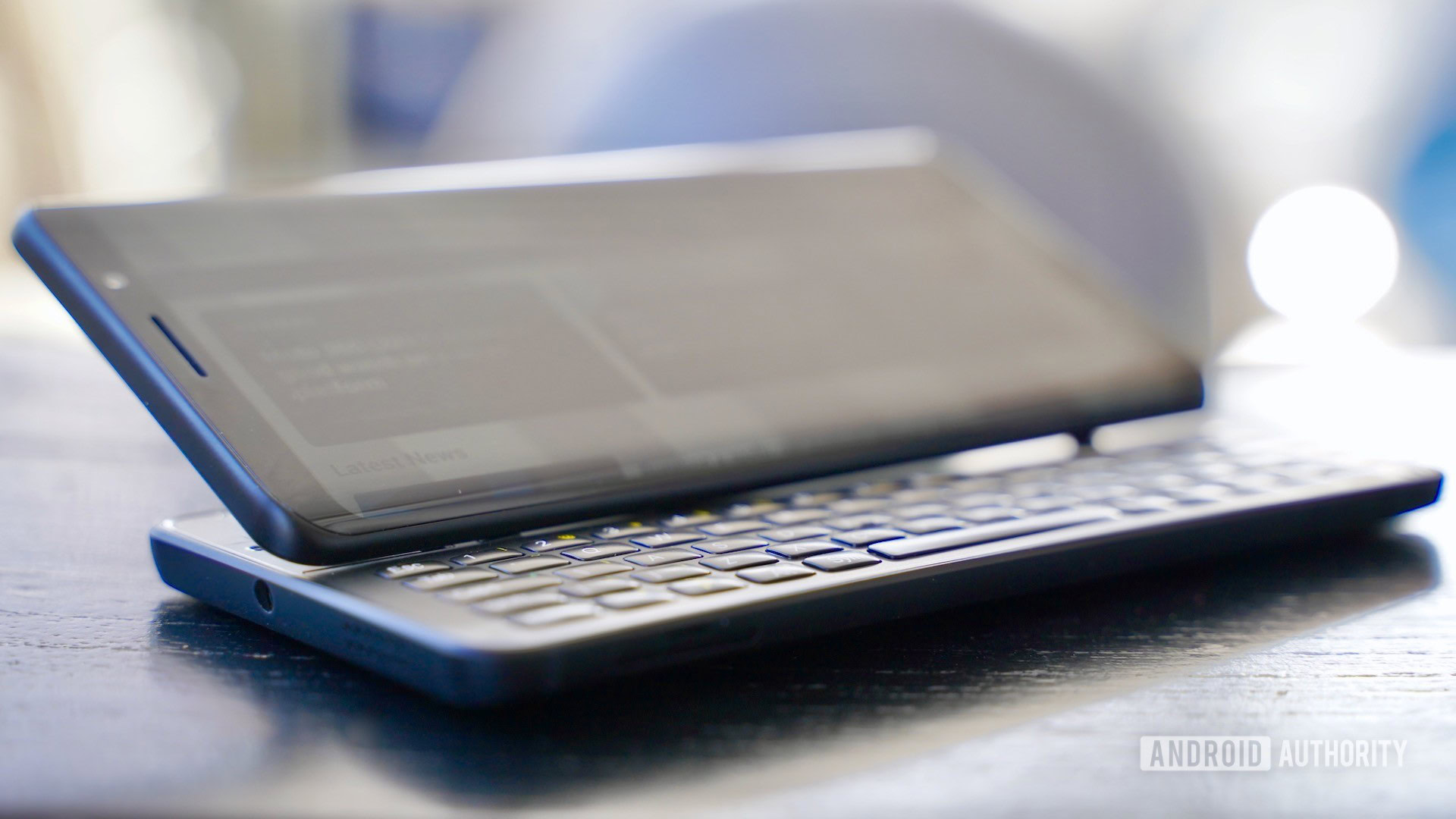
A decade ago, people still furiously pecked at the physical keyboards of BlackBerries and some Android phones. Swipe-typing wasn’t a thing yet and many clung to the notion that a smartphone must include real buttons to press. These preferences faded over time, and phones with keys largely died out. Still, some die-hards remain and it is those folks Fxtec is targeting with the Pro1.
The Fxtec Pro1 features a full-sized screen and a physical keyboard that hides behind the screen when not in use. When opened and set on a table, it resembles a mini laptop and is clearly meant for those seeking to be productive.
Can this small company convince people to come back to the keyboard? Find out in Android Authority‘s Fxtec Pro1 review.
Fxtec Pro1 review: The big picture
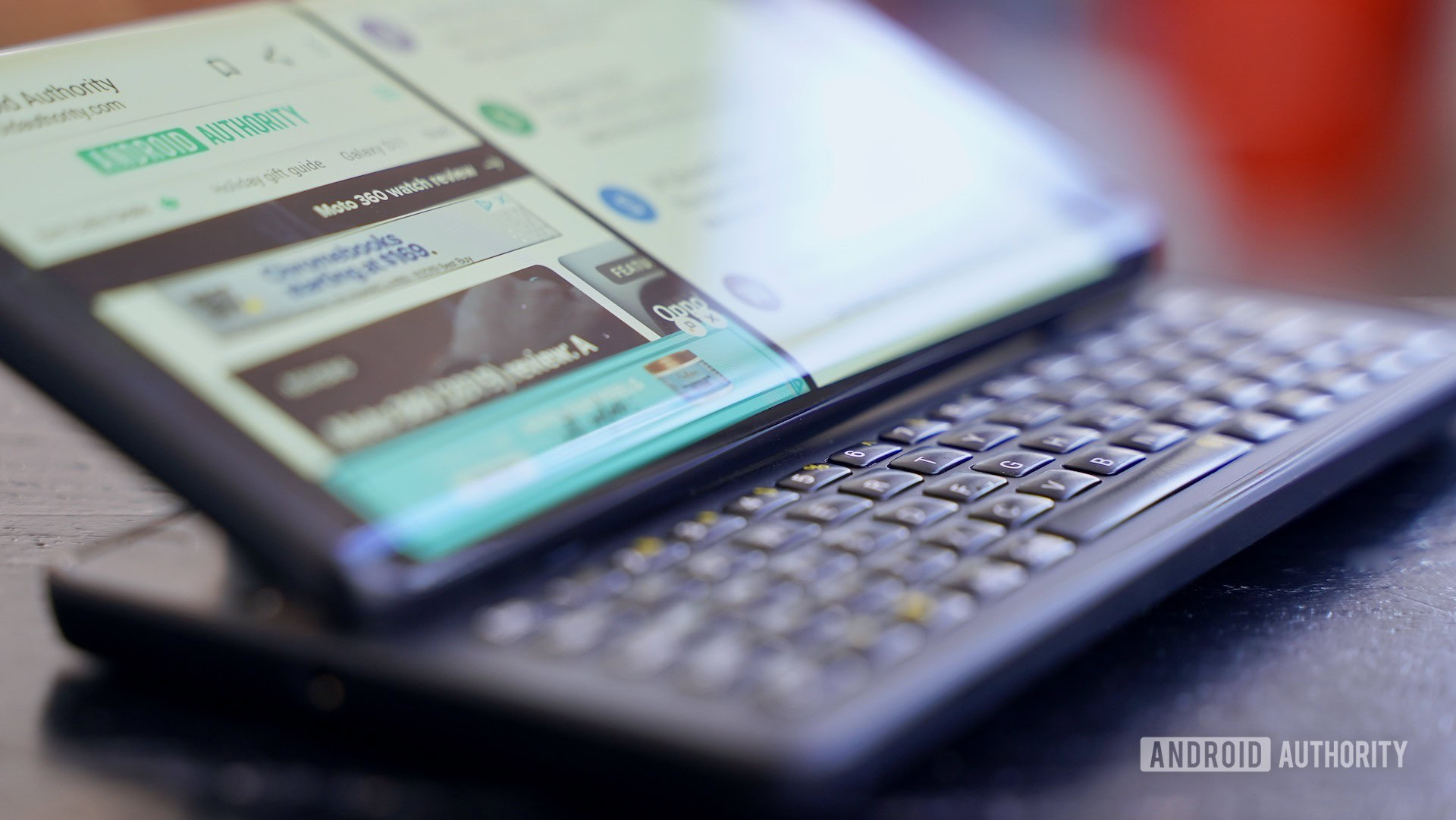
The first real smartphones from the likes of BlackBerry and Palm featured tiny keyboards for typing. I happily poked at my BlackBerry 8700 and Palm Treo 650 back in the day. Many millions of mobile professionals cut their teeth on these devices, often supplied by work, and were the first real wave of smartphone users.
The tech industry moves fast, however, and the Apple iPhone changed everything in 2007.
Keyboard-equipped phones lost to big-screened devices for a reason: people prefer phones with large displays. (Have you see the size of the screen on the Samsung Galaxy Note 10 Plus?) Keyboards eat into the real estate available for those screens, and solutions such as Gboard, Swype, and auto-correct helped resolve the typing issues prevalent on screen-only phones.
Still, some of those early original smartphone adopters miss the keyboard, which they felt provided a better experience for composing emails on a screen. Fxtec isn’t necessarily targeting older people, but it is eyeing, in the words of founder and CEO Adrian Li Mow Ching, “people who need to get shit done.”
Did the Fxtec Pro1 help me get more stuff done in the time I used it? I’m here to tell you.
What is the Fxtec Pro1?
Finding a modern smartphone with a built-in QWERTY keyboard is all but impossible. The TCL-made BlackBerry Key2 and Key2 LE are just about it. These two are candybar-style phones, however, like the BlackBerries of old, meaning the screens are smaller to accommodate a keyboard that’s crammed into the phone’s chin. The BlackBerries’ keyboards are always accessible.
The Pro1 is what we used to refer to as a sideways slider, though it doesn’t quite slide. The phone has two halves that rest upon one another: the screen up top and the keyboard underneath. There used to be lots of these: The Samsung Galaxy Indulge, the Motorola Cliq, the LG Mach, for example.
Rather than simply slide back and forth, the Pro1 has a hinge that tilts the screen up at an angle. It doesn’t stand at 100 or 110 degrees; rather, it is a comfortable 155-degree angle for viewing the screen when holding the phone in your hands.
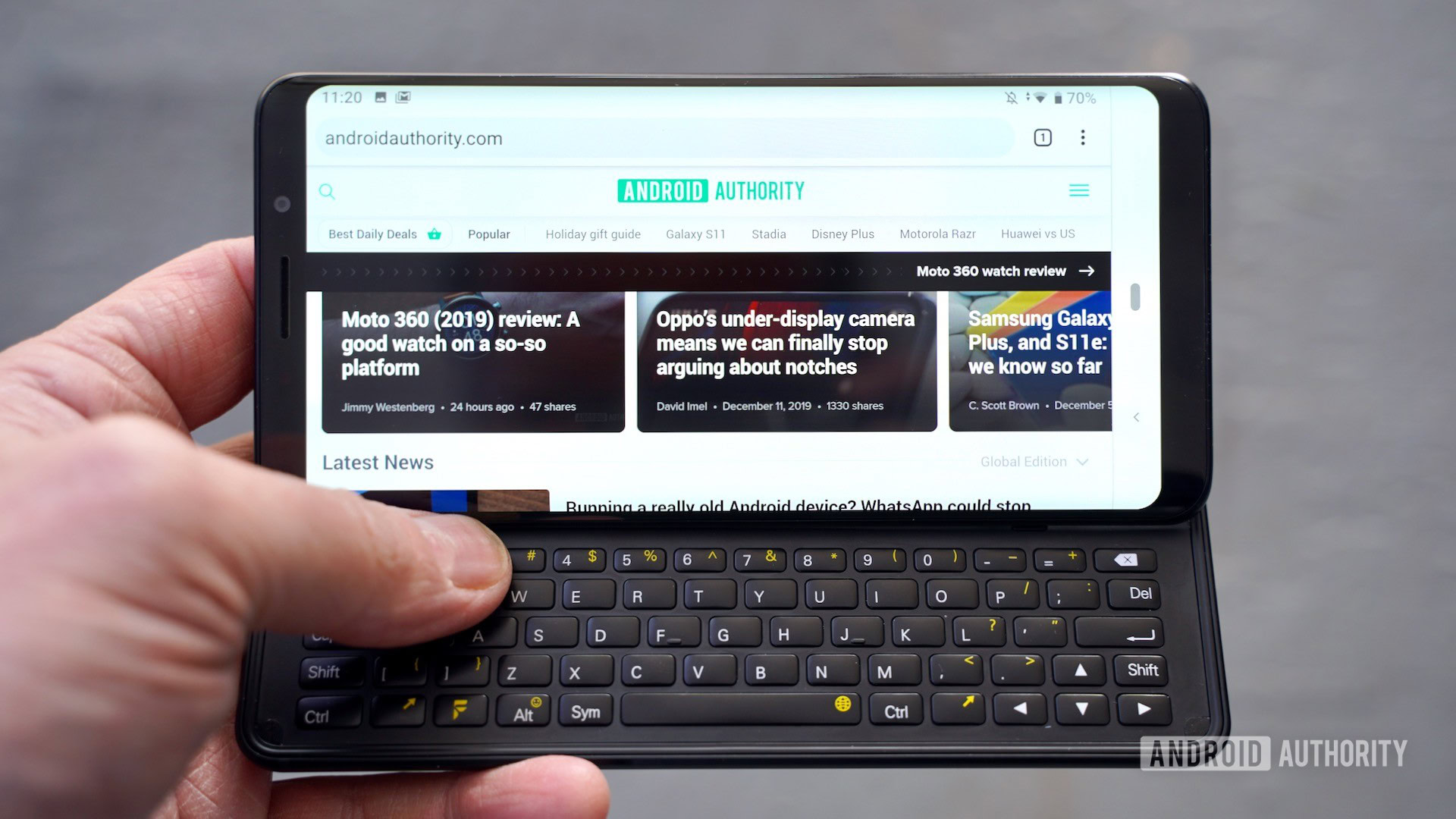
The phone it most closely resembles is the 2007-era Nokia E97, which, says Fxtec, actually inspired the hinge design.
See also: Best smartphones with keyboards
What are the Fxtec Pro1’s hardware features?
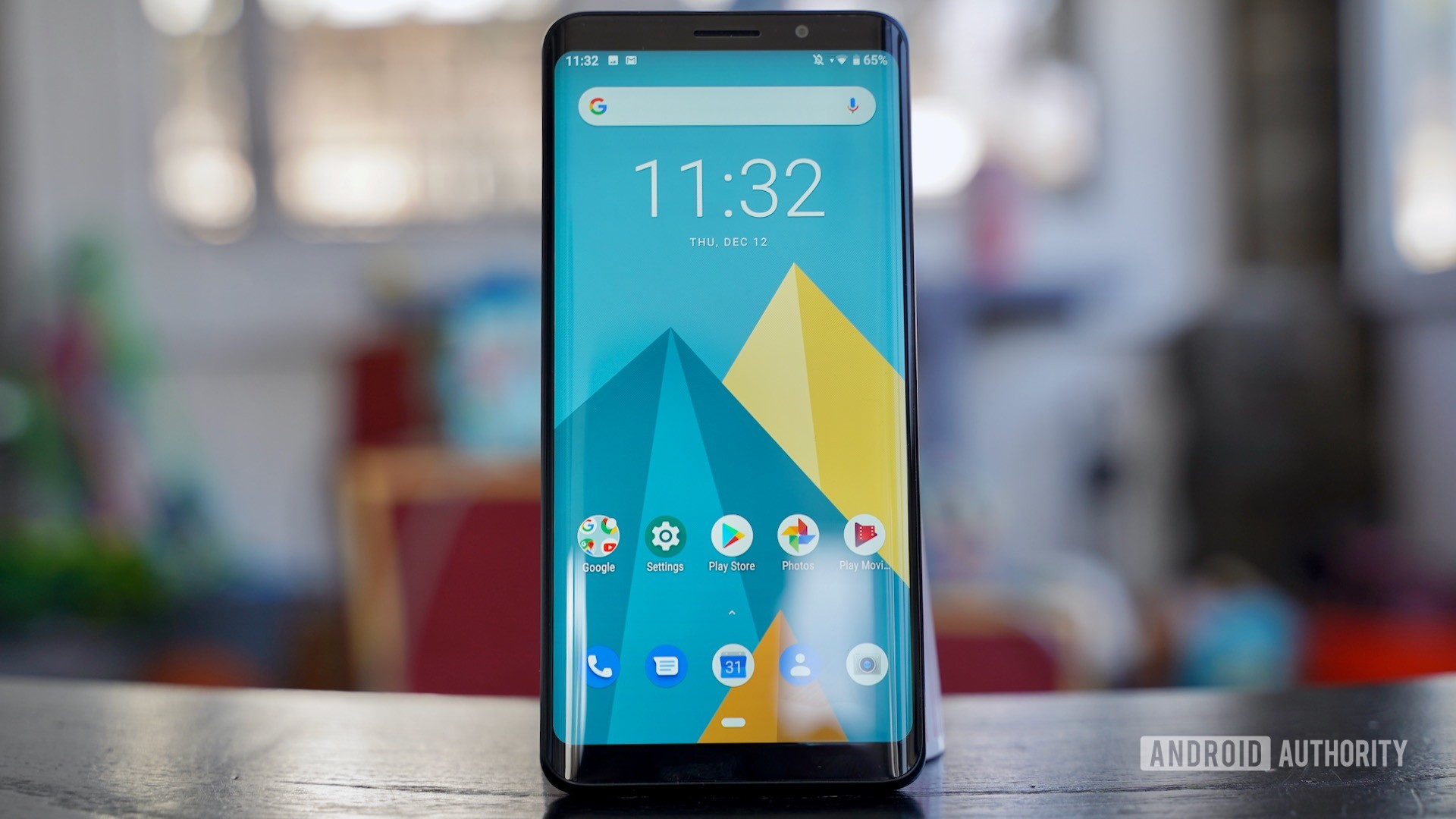
As far as basic features are concerned, the Pro1 might surprise you. The screen measures 5.99 inches across the diagonal with Full HD+ resolution (2,160 x 1,080). It is protected by Gorilla Glass 3. I’d call it a decent screen, but also a forgettable one. The size and resolution are fine, it offers plenty of light, and the colors are accurate. Outdoor visibility is good enough.
The Pro1 is comparable to other phones with 6-inch screens, at least in terms of length and width. Its 14mm depth, however, makes it chunky. The front may be glass, but Fxtec had no choice but to use lots of metal in the sliding hinge mechanism and the bottom half of the phone. It’s heavy. At 244.6g or 8.63oz, the Pro1 is heavier than a Samsung Galaxy Note 10 Plus — with a case on.
Fxtec smoothed over the profile of the phone, giving it curved side edges (including the display) and rounded corners. This absolutely necessary design decision helps reduce the overall footprint to a more pocketable size. The rear metal has a matte black finish with a pleasing grain.
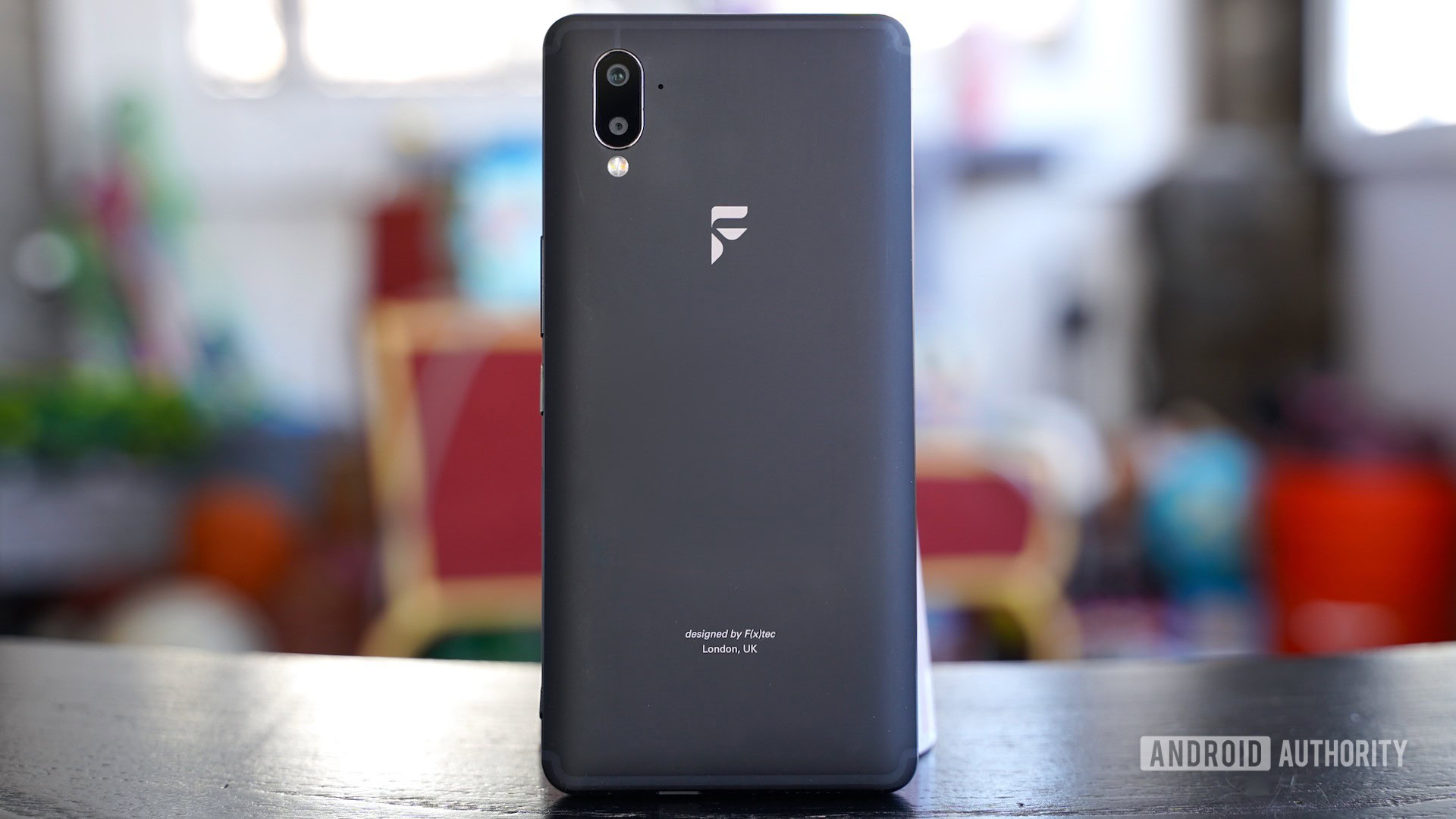
The Pro1 is thick and heavy, but the aluminum and glass feel nice.
Three buttons are on the right edge of the phone, including a volume toggle, power button, and camera key. I am not a fan of the buttons, which make loud clacky sounds when pressed. The volume toggle is loose and floats a bit, while the camera button hardly moves at all.
A fingerprint reader is mounted on the right edge, too. It’s a bit low. I found it easy to train, but it hardly ever worked properly. I gave up and resorted to a password.
You’ll find a 3.5mm jack on top, USB-C port on the bottom, and a SIM card slot on the left edge. I appreciate that the SIM tray can be removed with just your fingernail. It can accommodate two SIM cards, or one SIM with a microSD memory card.
The Pro1 is not rugged, nor is it water proof/resistant.
What’s it like to use the Fxtec Pro1?
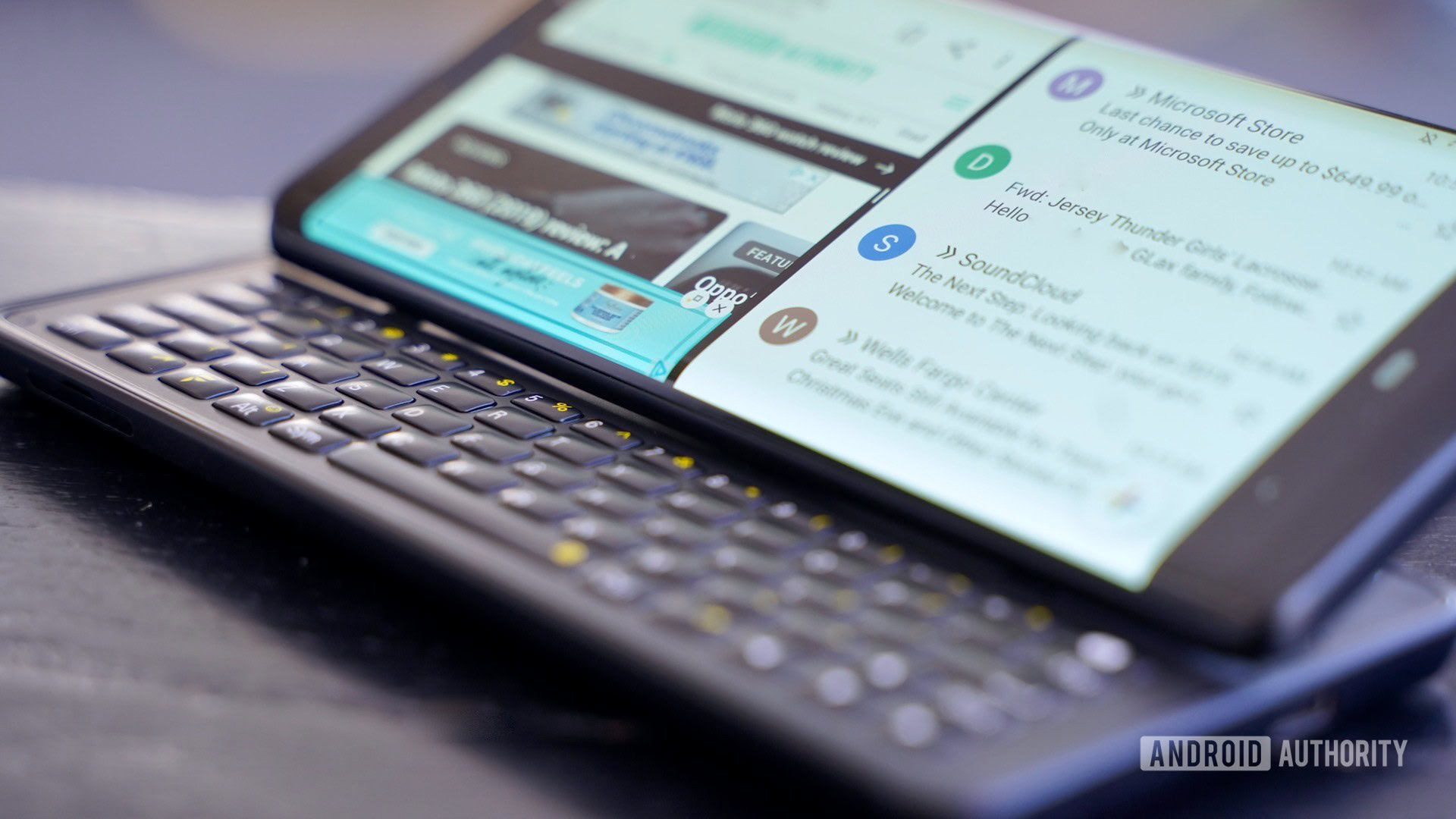
Despite seeing various prototypes of the Pro1 over a period of more than seven months, I’m still not convinced Fxtec got the design right. I like and appreciate the basic concept here, but the execution is simply not there.
The foremost problem is the hinge. The physical act of forcing the top half to open is maddening. Rather than simply pop open with a little pressure, you have to press the top half forcefully to convince the hinge to budge. This has been true across all the prototypes I’ve seen, including the shipping model we reviewed. Thanks to the rounded design, your fingers have little purchase to push against. This means you’re just as apt to accidentally fling the phone across the room as you are to successfully open the hinge.
Opening the hinge to access the keyboard is far too difficult.
To be perfectly clear: Opening the hinge to access the keyboard, the phone’s signature feature, is far too difficult. I shouldn’t have to think about it, it should be a one-handed, muscle-memory action that I don’t even know I’m doing. Instead, I fight the phone each time and fear I’ll send it flying. Moreover, it takes longer to successfully and safely open than it does to just use the on-screen software keyboard.
Unfortunately for Fxtec, frustration defines the entire experience of using the Pro1.
How is the keyboard?
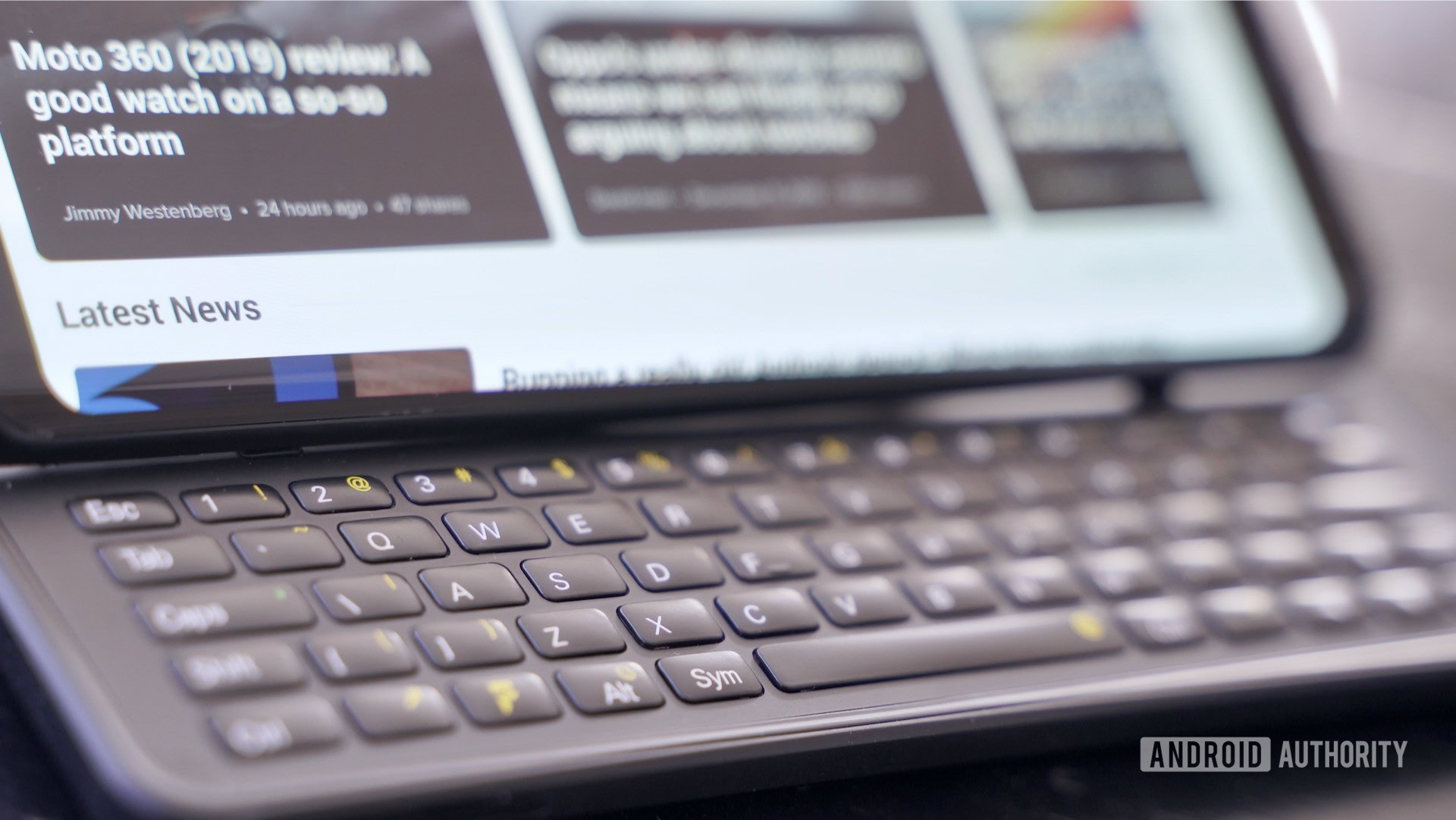
They physical keyboard itself is fine. It’s a five-row job with dedicated rows for numbers and other controls such as a spacebar and arrow keys. It’s pretty much a full QWERTY keyboard.
I’ve never been a fan of the sideways keyboard layout. I find my thumbs have to travel too much, which cuts down on efficiency when typing. That said, surely there are people who like this form factor and will find the keyboard comfortable to use. Personally, I’m much faster using Gboard.
The buttons have a dome-like, rounded shape that helps define them. Each key has a distinct and pleasing action. I love that there’s a light for the caps lock button. Fxtec says the Pro1 has a backlit keyboard, but it’s so dim you can only see it in spaces that are nearly pitch black.
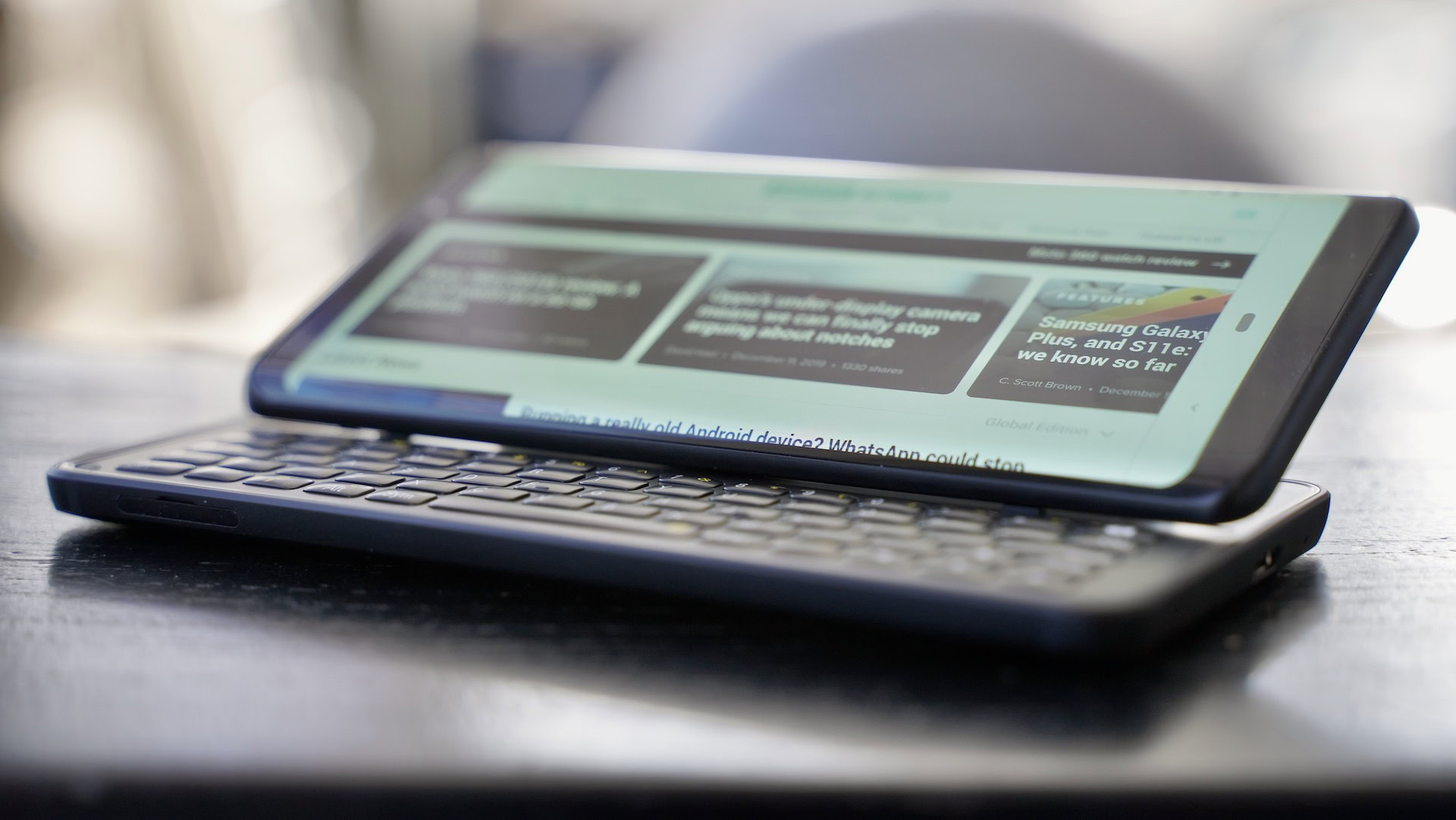
The real benefits of the keyboard? Shortcuts and multitasking.
The real benefit of the keyboard? Shortcuts. There are a number of pre-loaded keyboard shortcuts for launching apps or actions, but you can customize much of it to your own liking. Power users will appreciate the speed this adds to their workflow.
I will say that the physical keyboard does improve multitasking. It negates the need for an on-screen keyboard, which leaves more room on the display for your apps. For example, you can have Gmail and a browser or other app open side-by-side and quickly move through and input text in either app. This is the most obvious benefit of the Pro1. On screen-only devices, the software keyboard often obliterates one or both apps when multitasking, impeding usability.
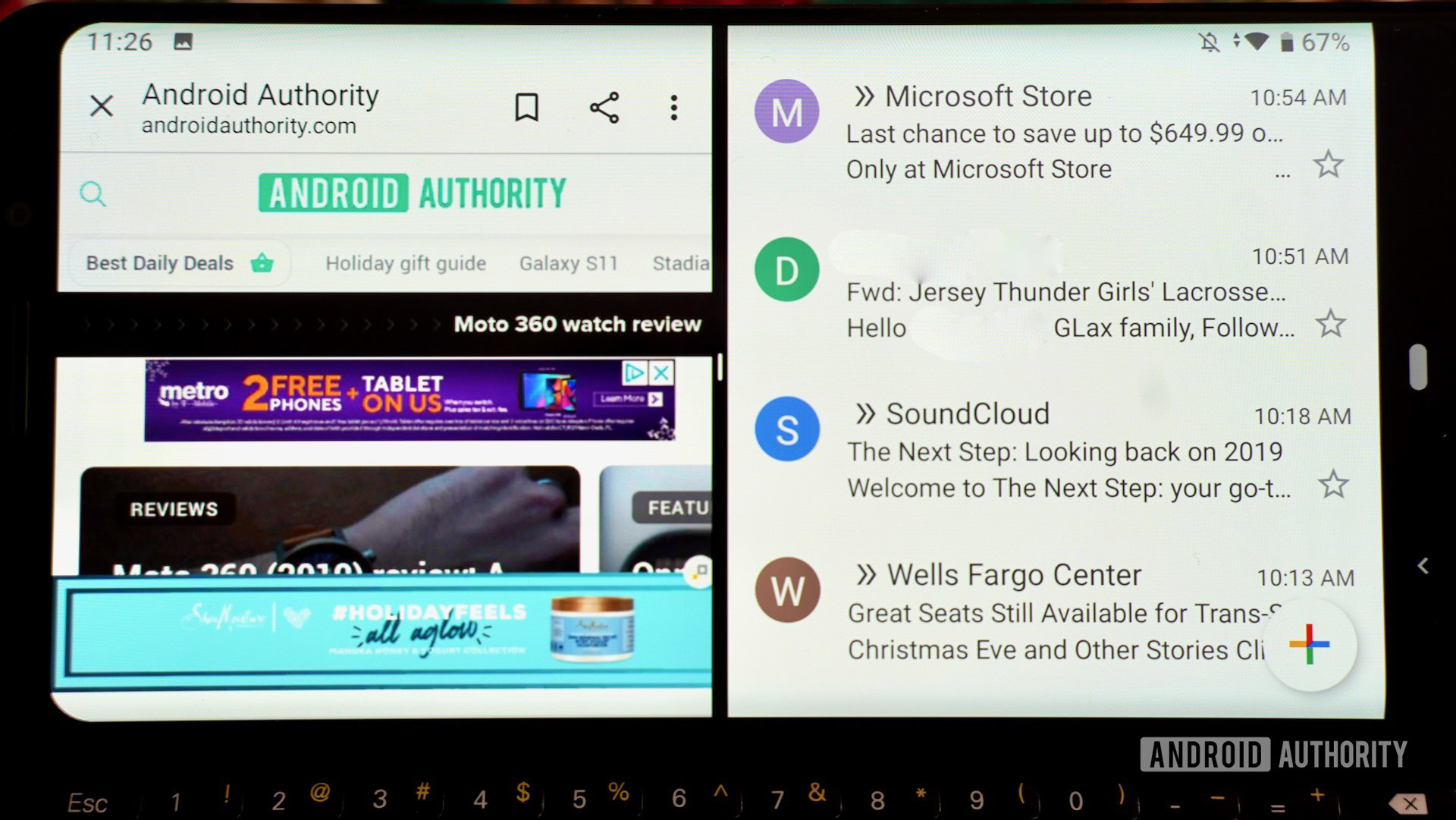
Does the Pro1 perform well?
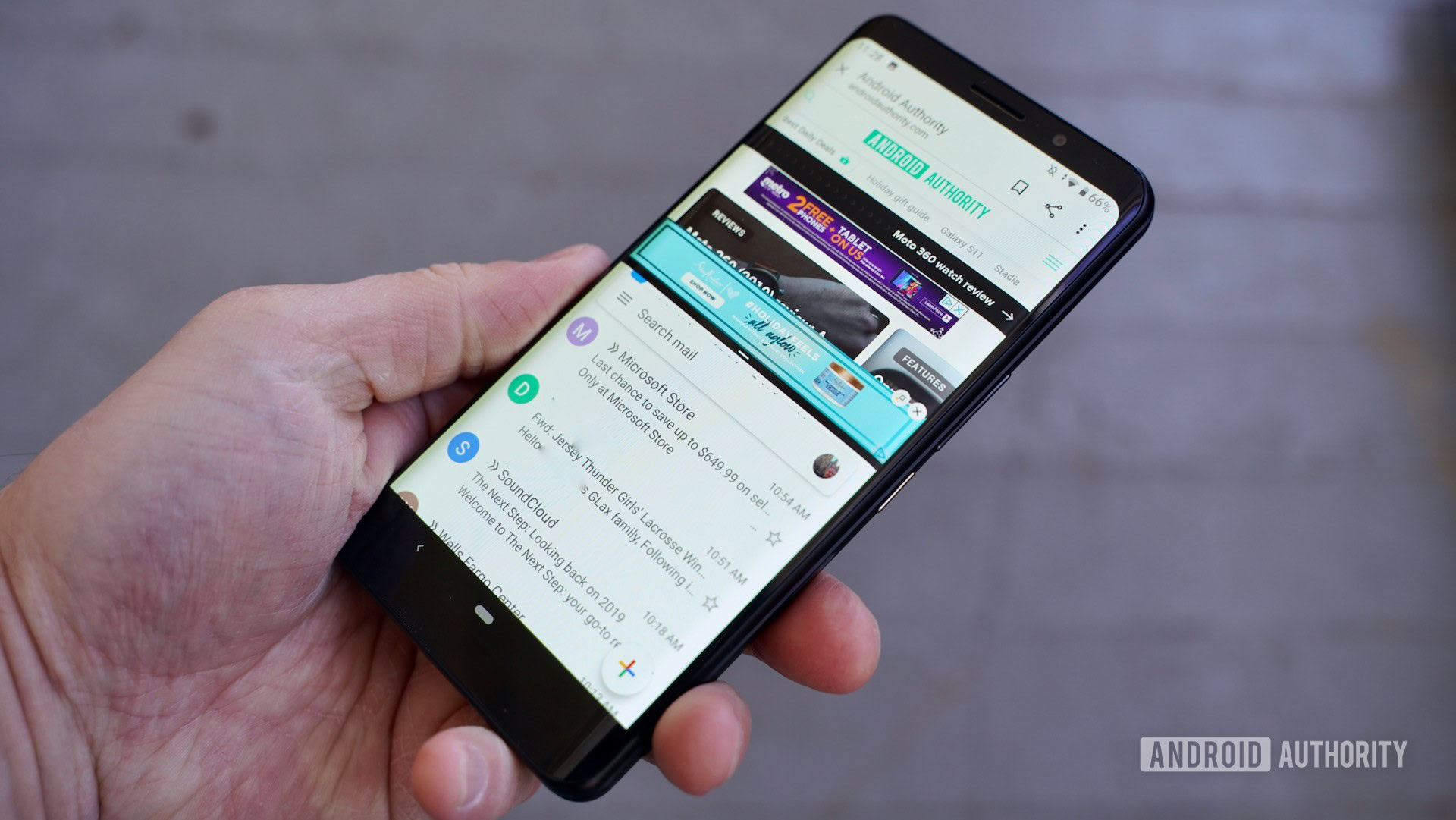
Fxtec first revealed the Pro1 at Mobile World Congress in February 2019 and expected to ship it by May. Through the February 2019 lens, the Snapdragon 835 processor made at least some sense as a less-expensive alternative to the 845 or 855. Now, at the end of 2019, and after Qualcomm announced the Snapdragon 865, the 835 feels like a serious misstep.
The processor, 6GB of RAM, and software all together deliver a janky performance at best. I know that Fxtec has been working hard on optimizing the software, and that’s evident when using the keyboard and multitasking. Nearly all of stock Android 9 Pie user interface has been optimized for the landscape view. Nearly, not all. When using the app-switcher, for example, you will encounter apps that are stuck in the portrait orientation.
Beyond that, however, nearly everything about the experience is buggy. Apps don’t open quickly, the side buttons don’t always register, and the screen seems to be overly sensitive to the slightest touch, and I find the phone doing something I didn’t intend more often than not.
The Pro1 has good battery life, and works well on AT&T and T-Mobile in the U.S.
The 3,200mAh battery actually does really well. The Pro1 easily pushed though full work days. I never once worried about running out of juice. Further, the included charger can power up the phone is just over an hour. That’s very helpful.
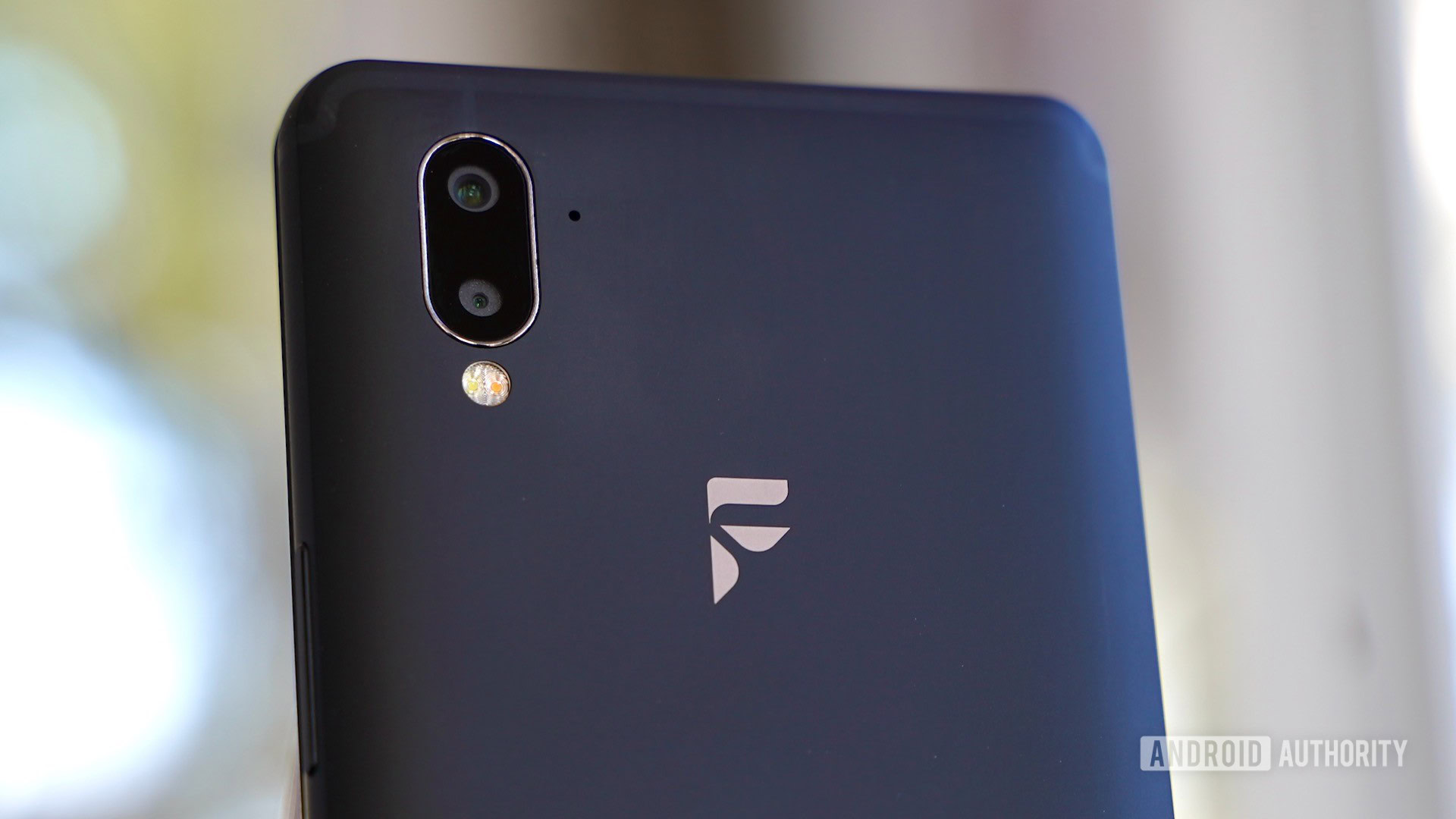
I would call the camera a mess. To start, the app is completely buggy. The buttons react to touches only 50% of the time. At least it has a fair number of shooting modes, including HDR, portrait, landscape, sports, candlelight, sunset, night, beach, snow, and pro. The phone has a 12MP Sony IMX363 sensor with a depth sensor and flash. It takes passable shots, but nothing spectacular. The portrait/bokeh tool struggles with edge detection.
Wireless performance was good all around. The phone is sold unlocked and supports LTE 4G from AT&T/Cricket and T-Mobile/Metro in the U.S. It worked well on both networks. The Wi-Fi and Bluetooth radios get the job done, and there’s an NFC radio for Google Pay.
Last, the vibration motor is just terrible. Sigh.
Should you buy Fxtec Pro1?
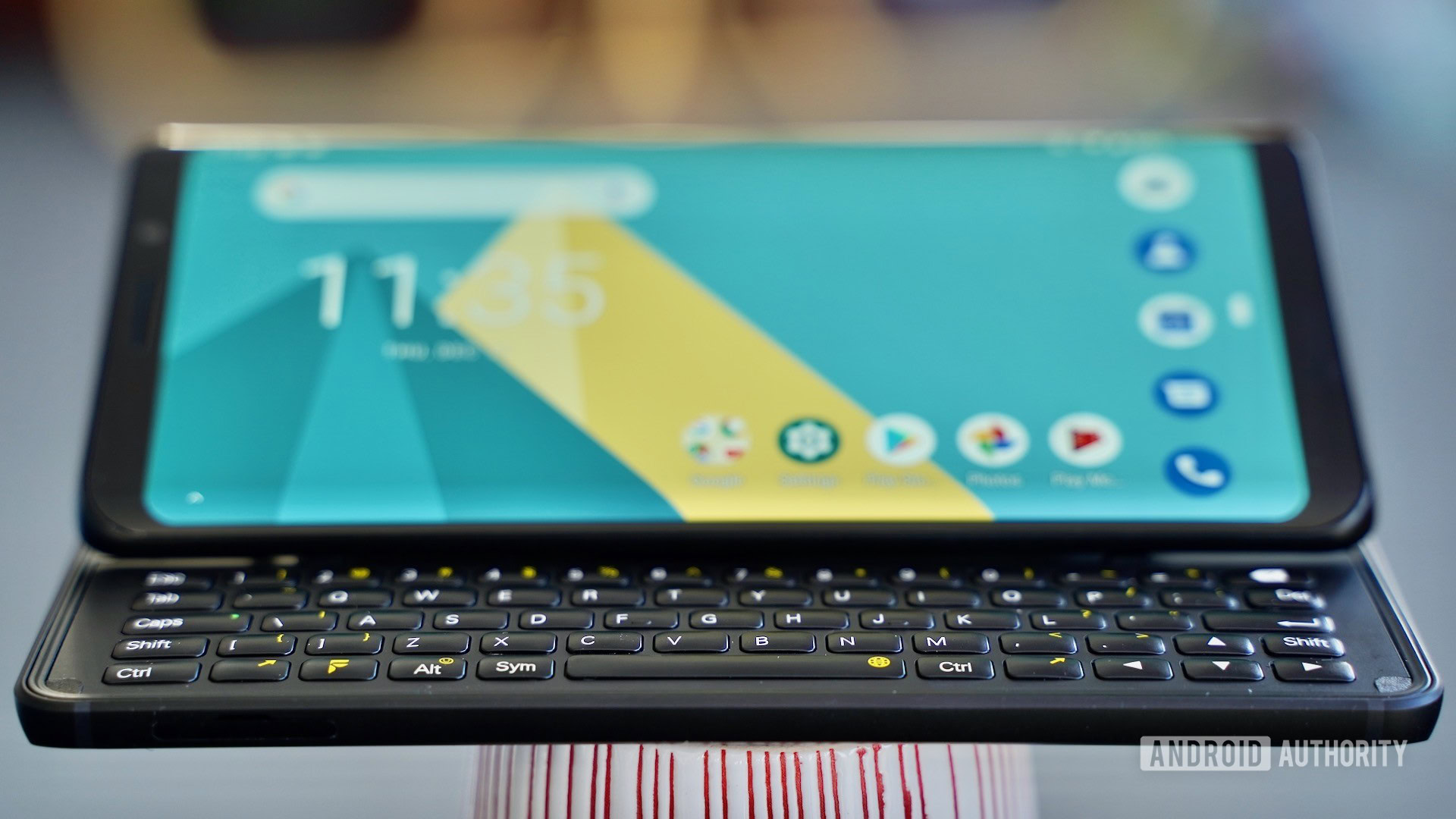
To put it simply, no. While I have a lot of respect for the team behind the Fxtec Pro1, this device is not polished enough. Hardware and software issues compromise the performance too much. The hinge is difficult, the buttons loose, and the processor not up to par. I do genuinely like the keyboard itself, and battery life is solid. These aren’t enough, however, to salvage the entire phone.
Moreover, the value isn’t there. Fxtec charges $699 for the Pro1. Phones in this price range need to work well across the board. Also, the phone will take four to six weeks to reach you once you place an order.
If you truly need the extra real estate for multitasking and typing, you’ll be much better served by the LG G8x ThinQ, with its second screen accessory that can serve as a keyboard if you wish.
In the end, I can only recommend this phone to those who absolutely, positively, must have a physical keyboard attached to their phone — and even then I think the two-year-old BlackBerry Key2 is a better overall pick.
